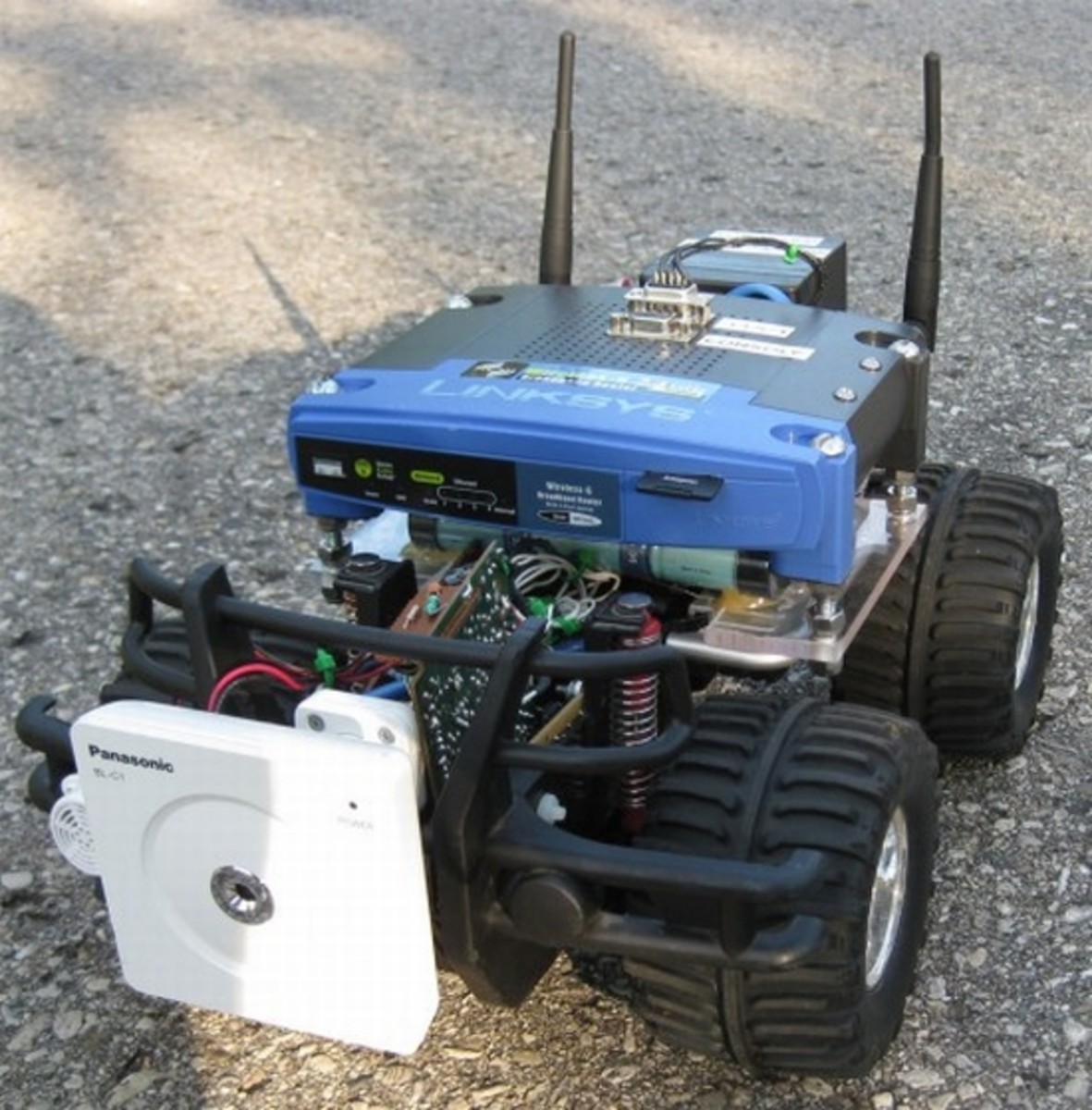Toy RC Helicopters and Drones
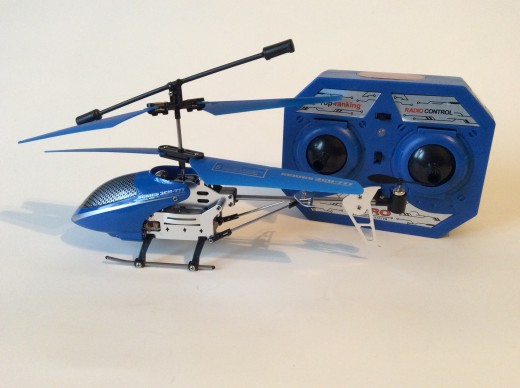
Flyable, remote-controlled toy helicopters and drones are becoming popular! It used to be that you had to pay pretty good money for a remote-controlled toy helicopter, But today, thanks to advances and falling prices in microprocessors and inexpensive gyroscopes, you can get a battery powered, remote-controlled toy helicopter for as little as $5!
This hub explores your options on the lower end of the price scale and exactly what you can expect if you shell out less than $50 for a toy helicopter or drone. The "RC" in this hub’s title, by the way, refers to “remote-control" not necessarily “radio control.”
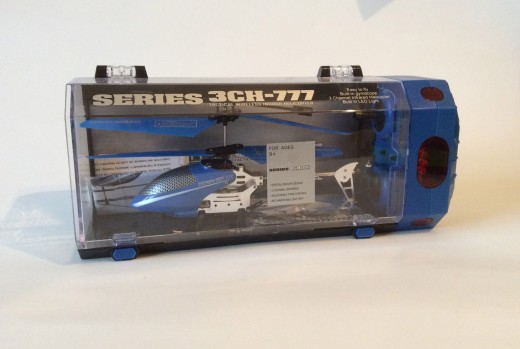
Infrared 3-Channel Toy Helicopters
At the lower end of the super-cheap price scale is the 7-inch-long dual-rotor helicopter of the kind shown here. These have been made practical by the advancement of inexpensive gyroscopes like those found in smart phones, which provide stability and make flying these things feasible for young kids.
Helicopters in the lower end of the price range generally work through infrared control (the same technology used by your television remote). This is a type of light invisible to the human eye and it means that the path between the remote and the helicopter must remain unobstructed. Since sunlight will overwhelm the infrared light, these helicopters must be flown indoors.
Although the remote control needs batteries, the helicopter itself is rechargeable. This is generally done either by plugging the helicopter into the USB port of your computer or into the remote itself, which draws out some of the charge of the batteries.
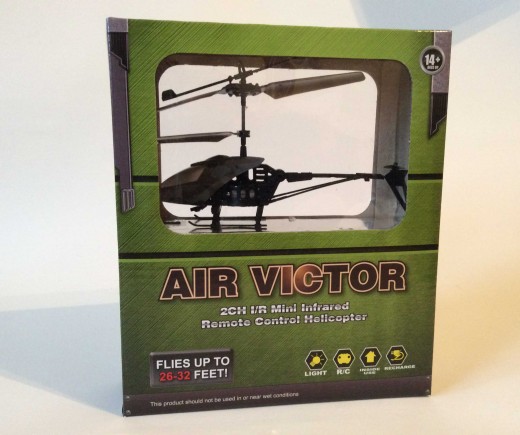
Durability of cheap toy Helicopters
Generally speaking, you should not expect this type of toy helicopter to last very long. As you might imagine, the toy receives some serious impacts from hard crashes (a hard crash being a crash against a wall, the floor or some other object from just 3 or 4 feet in the air).One reason that these helicopters are subject to such crashes is that their large main rotors are unprotected against impacts from walls, furniture, or other objects.
In some cases, these toys will not withstand more than one or two such crashes before they will stop working. Although the exterior body parts may be made of metal, this is generally not what breaks in such crashes. Rather, the plastic internal gearing system of the toy’s mechanism is what gives way.
While $20 may seem pretty cheap for such a toy, you have to take into account the amount of actual playtime that is received for this price. After the toy breaks, the child can hold it up with his hand and fly it in his imagination, but that's about it. Ironically, sometimes the toys packaged in the sturdiest, most substantial looking carrying cases are the ones with the shortest lifespan.
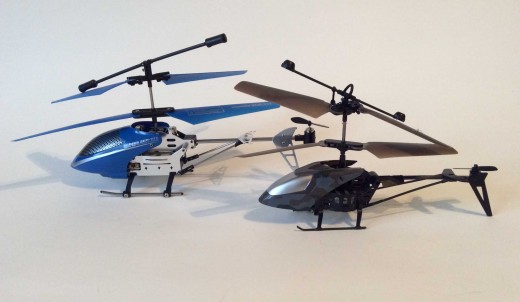
Air Victor $5 Helicopter
Of similar design and remarkable value, however, are the remote-controlled helicopters sold in the Five Below chain stores (above). They shave off some of the expense of manufacturing with cardboard packaging, plastic construction of the helicopter’s body and the absence of a tail motor.
The plastic body is not a problem, since, as noted, the internal gearing mechanism is what is most likely to break during a hard crash. The lack of a powered tail rotor, However, means that these helicopters are somewhat more difficult to control than the more expensive versions. You're more likely to crash them, but since they only cost five dollars, this is not a big problem! A working remote-controlled helicopter is a pretty remarkable value for $5 and it can make s nice "stocking stuffer" at Christmastime.
Since these toys must be flown indoors, obviously, the larger the room you fly them in, the better. Those with a high cathedral ceiling will have more options than those who live in a small apartment. If you can clear up space somewhere, such as in the garage, so much the better.
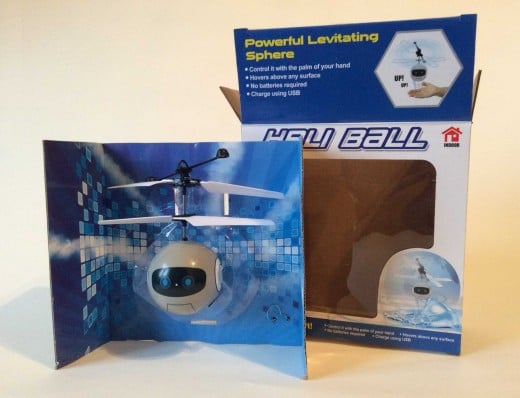
Heli Ball
Another remarkable toy for $5 from Five Below is the Heli Ball. As the name suggests, this is a small ball with a pair of helicopter rotors attached to it. The Heli Ball eliminates the remote control but adds a sensor on the bottom that detects its distance from the floor, along with a microprocessor that automatically adjusts its height.
Because of this intelligent sensor, this toy can fly the longest in a large room without smashing into something. Children can control the Heli Ball by holding their palm underneath it (provided there is enough ceiling height). The motor is started and stopped by pressing the on/off button on a standard television remote control.
This is one of the most ingenious flying toys I've seen and a remarkable value for five dollars. Like the other toys, the Heli Ball will not withstand a lot of hard crashes, but it is generally the easiest to control of any of the other models discussed so far.
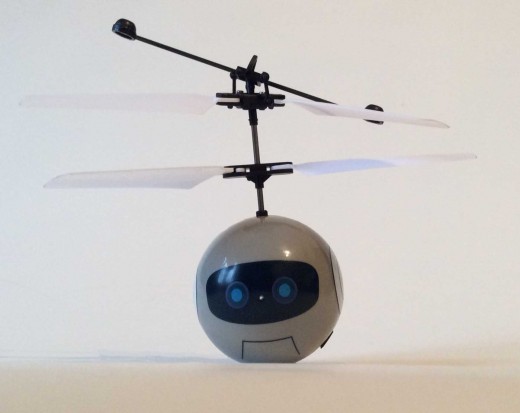
Heli Ball Rating
Inexpensive toy drones
Now it is time to move into “drone” territory. Inexpensive toy drones can be had these days for as little as 30 or $40. Drones are generally easier to fly than the remote-controlled helicopters because the four propellers are smaller and are typically protected by rotor guards. If the toy comes in contact with a wall or piece of furniture, it will simply bounce off.
This does not mean that these toys cannot crash but they are generally much easier to fly than helicopters with large, unprotected blades.
Toy drones are generally controlled through a four channel 2.4 GHz system, which means they can be flown outdoors as well as indoors. Be aware that outdoor flying is much more difficult than indoor flying, however. Even indoors, the slightest breeze, such as that created by the drone’s own rotors, can cause the drone to fly erratically. Outdoors, the problem of breezes becomes much more severe.
The advantage of outdoor flying, of course, is the more unrestricted airspace, which means fewer things to crash into. Unfortunately, it is very easy to fly the things too high outdoors, which means they could land on a roof, be carried out of sight by the wind, or suffer a punishing hard crash. Although the price of these toys has come down dramatically in recent years, it can still be disappointing when a child gets so little playtime out of a toy before it stops working.
Inexpensive toy drones generally charge by either attaching them to the battery-powered remote-control or to a computer through a USB cable. Commonly, inexpensive models suffer from poor instructions and confusingly laid out controls.
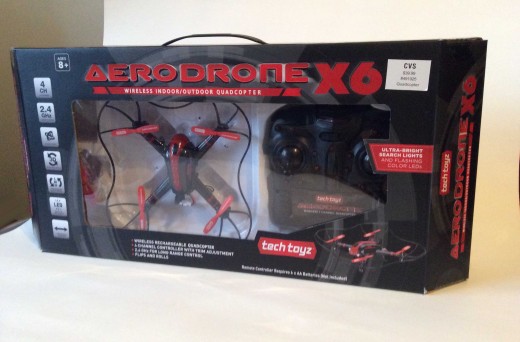
Aerodrone X6 by Tech Toyz
The toy drone I have tested (all for scientific purposes, of course) is the Aerodrone X6 from CVS drugstores. Although the drone worked, I found it was burdened by a number of design flaws.
One of these was an on/off switch that was simply a wire that had to be connected to another wire on the body of the drone. Unfortunately, the connector had "teeth" that locked it into place once it was connected, making it extremely difficult to disconnect afterwards. I had to use brute force, nearly breaking the connector in the process, after which I filed down the “teeth” so that the problem would no longer occur.
In flight, the drone was easier to control than the helicopters discussed above, but it had an annoying tendency to fly to one side, so its flight path had to be constantly adjusted. Another problem is that after two or three flight and recharging cycles, one of the props would fall off after only a minute or so of flight time. When pushed back on, it fell off again after a short amount of flying.
The toy came with a number of replacement props, but, bizarrely enough, even though they seemed identical to the original, the toy could not achieve liftoff with anything but the original propeller. (This does go to show how precision-engineered even these toy drones must be—a rotor that looks perfect may simply not work.)
When I attempted the fourth flight, the power light on the remote started flashing and the drone would not respond, even though it was fully charged and the remote batteries also had sufficient juice left.
My verdict is that, while inexpensive toy drones may have advantages over toy helicopters, they're still pretty lacking in the longevity department.
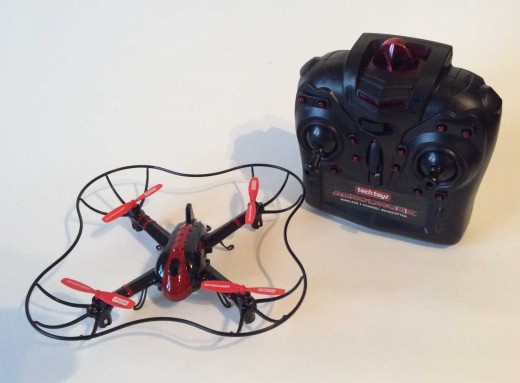
Toy helicopter features / price ranges
Description
| Features
| Price
|
|---|---|---|
Cheapest RC helicopter
| It will fly, includes gyroscope
| As little as $5
|
Slightly more expensive helicopter
| Includes tail rotor, for better control, heavy duty case
| $20 or less
|
Cheapest toy drone
| Easier to fly, 4 rotors, rotor guards, indoor/outdoor use
| $40 or less
|
Slightly better toy drone
| Includes low resolution camera
| $50 or less
|
Entering hobbyist territory
| Better camera resolution, smartphone control, greater range, autopilot and autostabilizing features, sturdier construction
| Over $100
|
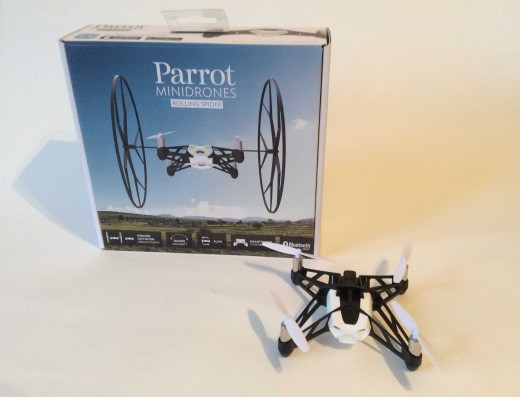
Parrot Rolling Spider
The next step up is the Parrot Rolling Spider from the well-known minidrone manufacturer. This model is starting to leave the realm of toy drone and entering that of a starter drone for the serious hobbyist.
It is controlled through Bluetooth and an app that you download onto your smart phone rather than a battery-powered remote control. Although the drone comes with few printed instructions, the downloadable PDF manual is excellent and very thorough.
The Parrot Rolling Spider comes with a crossbar and large, lightweight plastic wheels, which help protect the rotors and allow the drone to perform stunts, such as rolling on the floor or even on walls and ceilings. I have not subjected the drone to extensive testing or taken it outdoors, but it seems to be of sturdy construction and has good longevity according to reviews. It has a built-in camera for taking aerial shots.
Have you purchased an inexpensive toy drone or helicopter?
Is it worth the money?
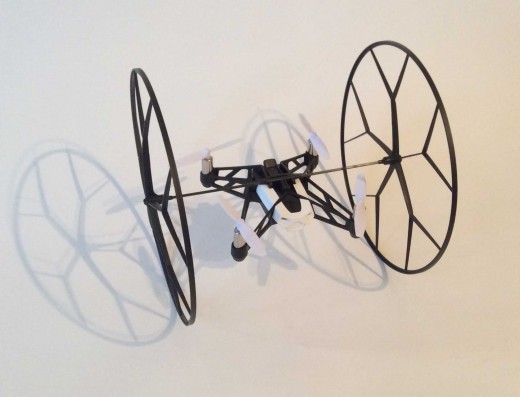
Although the Parrot Rolling Spider may cost two or three times as much as inexpensive toy drones, if it lasts several times as long, I would call this good value for money. In the case of drones, it may pay to save up your money and buy something with more quality to it.
On the other hand, if you fly a pricier drone into a tree on its maiden voyage, you'll feel more heartbroken than if you destroy a $40 drone on its first flight. The choice is up to you!



